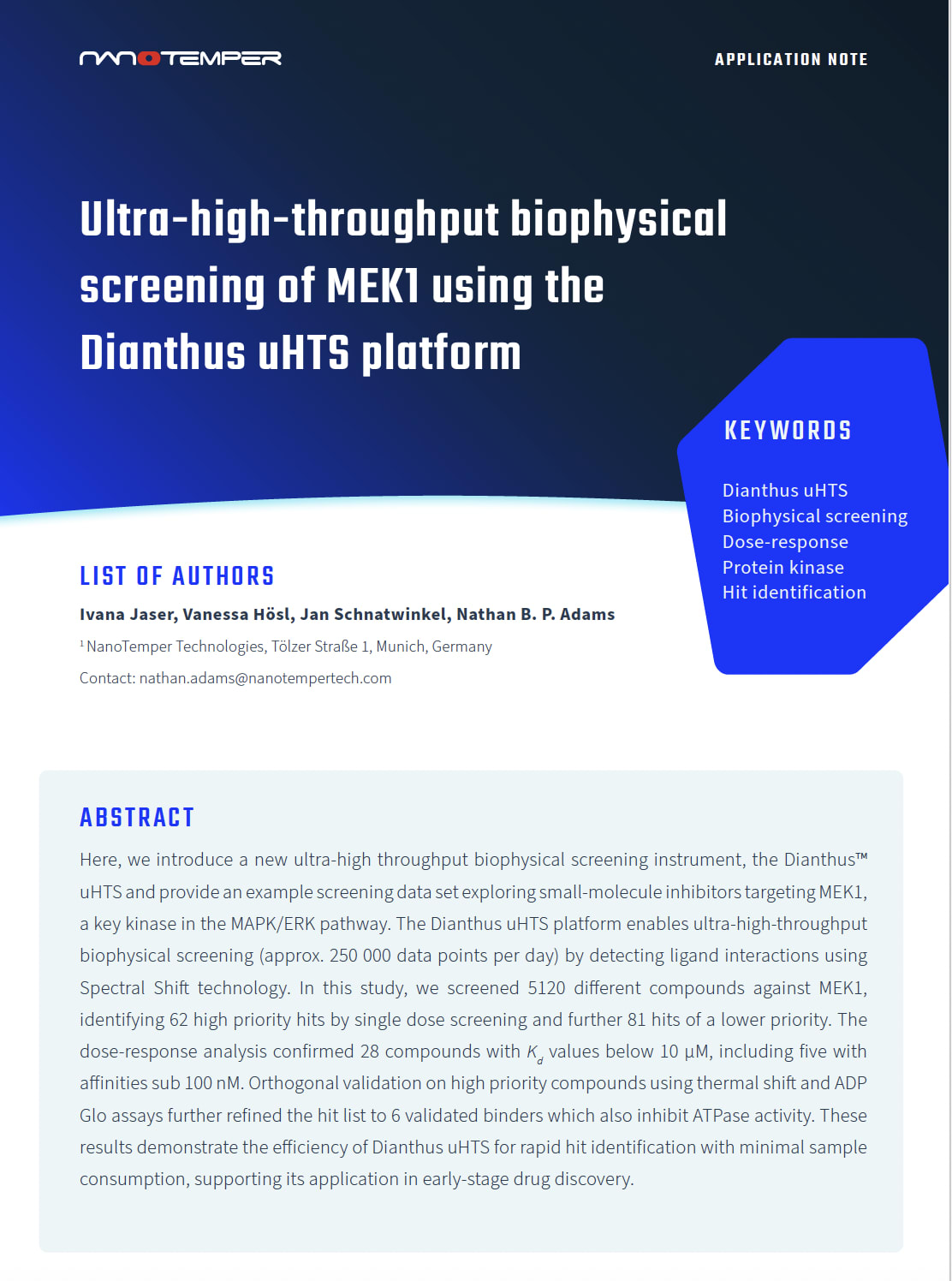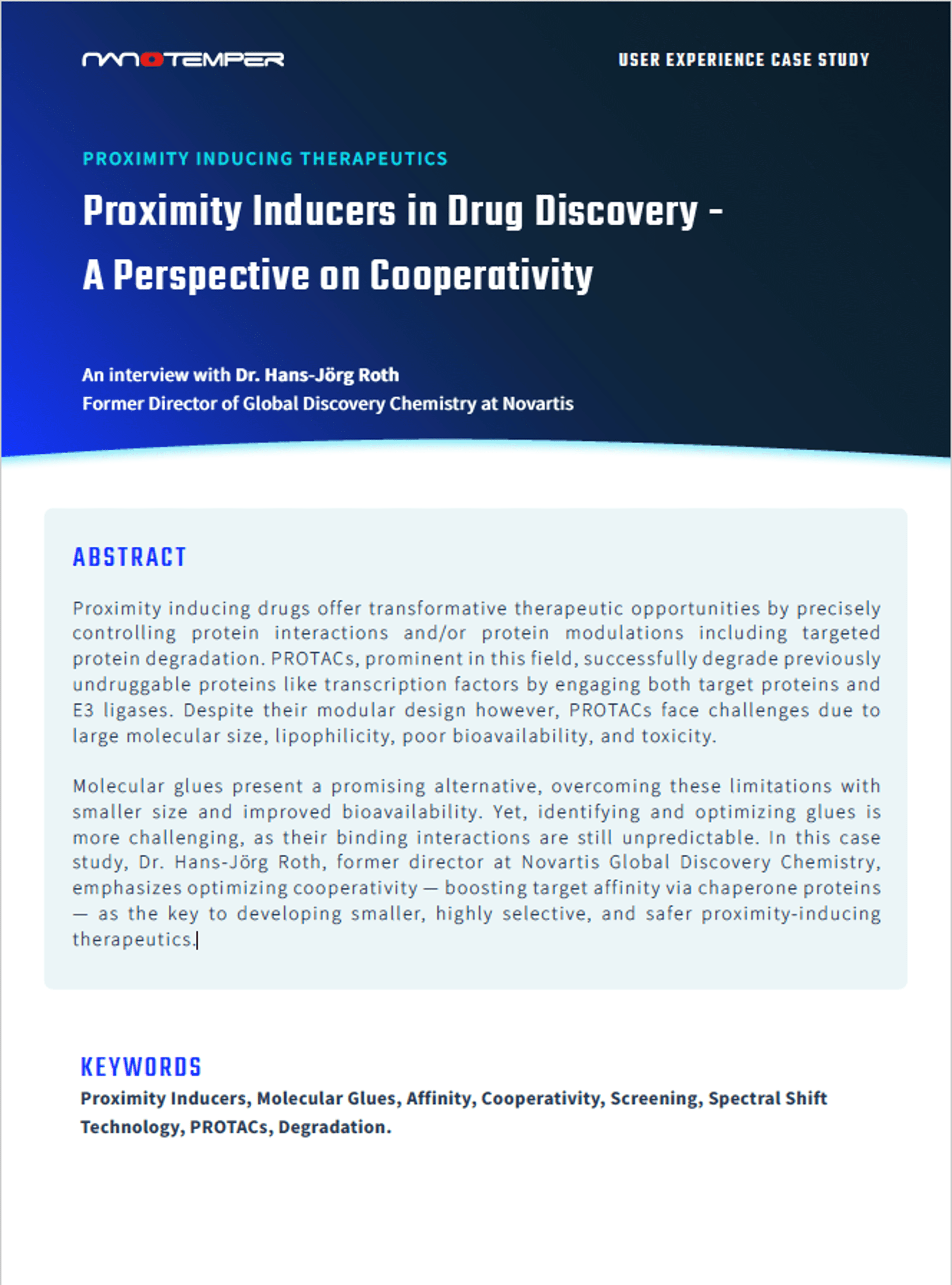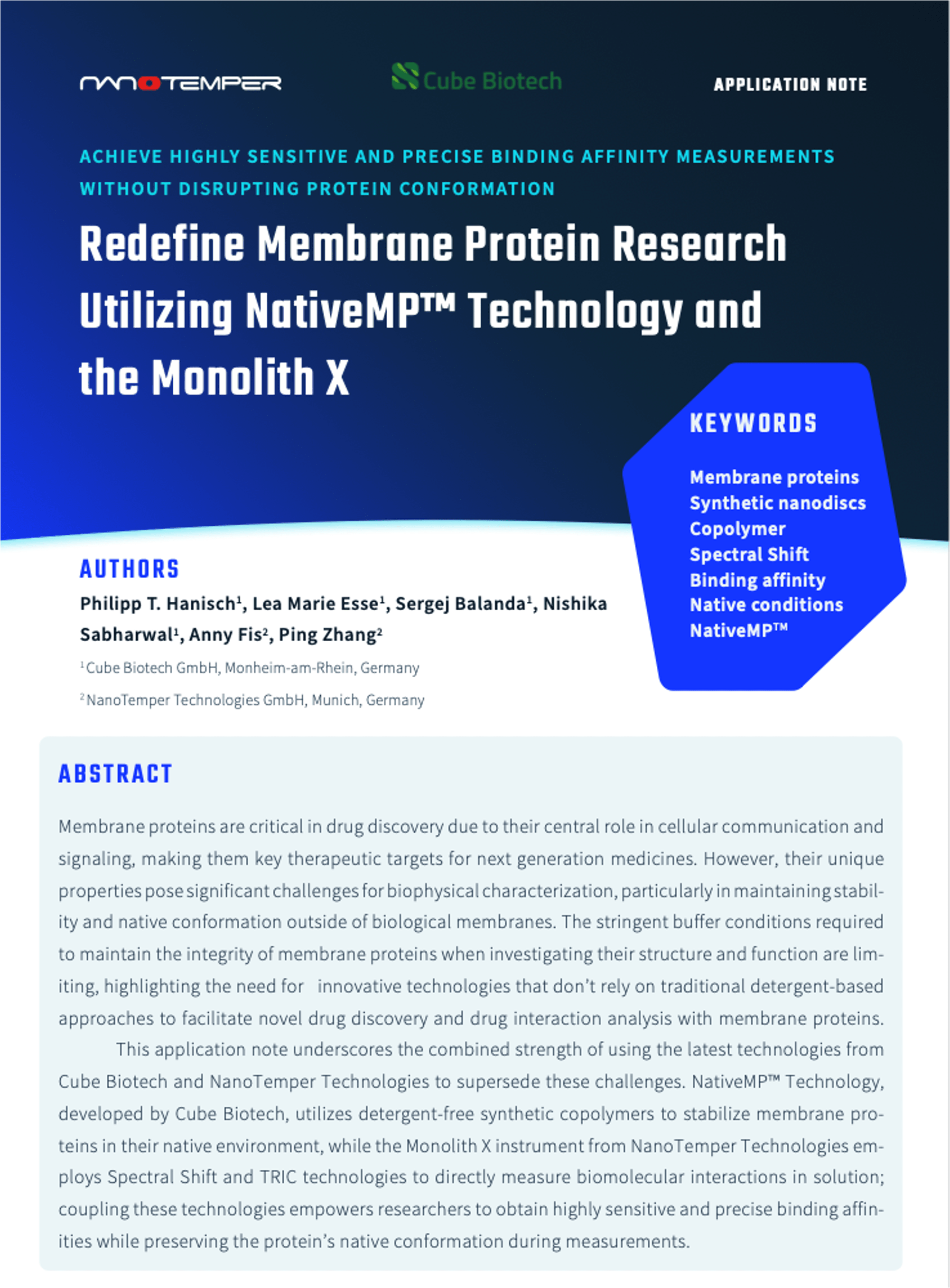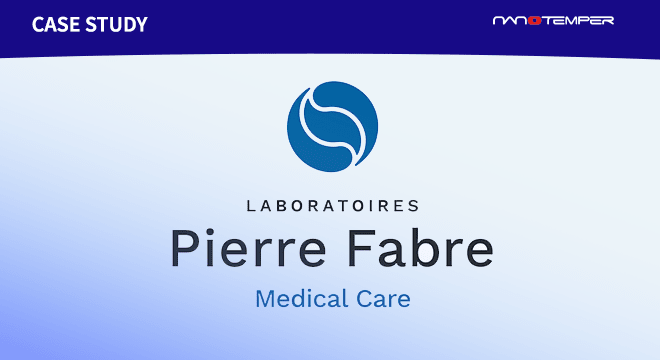The binding of therapeutic drug candidates to human serum albumin (HSA) and other
plasma proteins needs to be monitored and profiled during the development of drug
candidates as it affects their adsorption, distribution, metabolism, and excretion (ADME).
Antisense oligonucleotides are an emerging therapeutic option to treat diseases with
known genetic origin. The interaction of these oligonucleotides with proteins like HSA
determines their pharmacokinetics (transport and distribution in target tissues) and
pharmacodynamic (binding to the mRNA target) properties and hence their eventual
pharmacology. Fast characterization of their protein-binding properties requires a simple,
robust and reliable method for the quantification of oligonucleotide binding properties to
HSA.
In this work, we illustrate the versatility of MST to determine micromolar binding affinities
of Cy5-labeled oligonucleotides for HSA. Importantly, these Cy5-labeled oligonucleotides
can be used as a tracer to determine the EC50 of an unlabeled oligonucleotide in a
competition assay.







